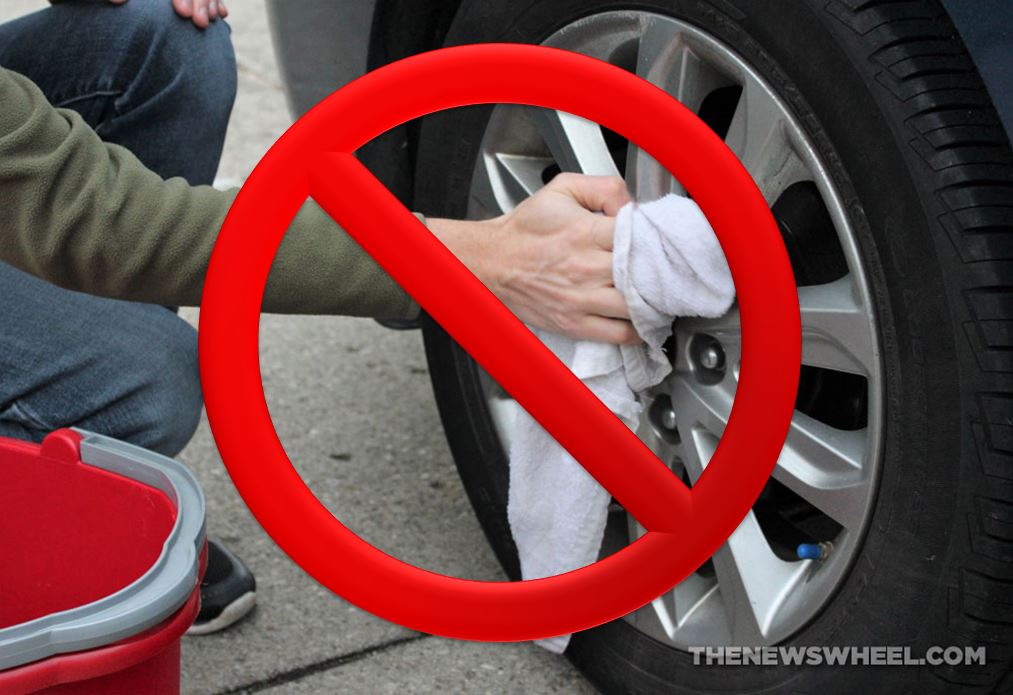Training
Written by Ross on . 53 Comments
I’ve received several questions from readers about how one can obtain a large tractor tire for flipping and other related exercises. Fortunately, it is usually a fairly easy process, with almost no cost involved. Most tire shops will gladly give away large tires from their scrap pile. The only cost incurred would be the fees associated with renting a truck to transport the tire.
If you wish to find a tire, you can start with an online search. Yahoo’s local page feature is a good starting point.
Yahoo! Local
From the link above, set your location and then enter tires in the search box. After setting your location, Yahoo will then list all of the tire suppliers in your area. You’ll need to sort through those that specialize in automobiles vs. those that specialize in tires for larger trucks and tractors. The latter group will be more likely to have tires that can be used for flipping.
If you are not able to find any large tire suppliers initially, start by calling some of the automotive tire suppliers. They can likely refer you to a business who deals with larger tires. Most related businesses (in the same general area) will know each other. They should have no problem referring you to a company that specializes in larger tractor tires.
Once you find such a supplier, ask if you can take a look at their scrap pile. Large tires are not easy to dispose, so many suppliers will have a scrap pile on site. One man’s junk is another man’s treasure. Just because the tires are no longer suitable for driving, does not mean they will not be suitable for training.
I recently located a new supplier in my area, and they were more than happy to provide access to the scrap pile. I had pick of the litter, and was told that we could take as many tires as we wanted. I was doing them a service by ridding them of some “junk” tires.
I had pick of the litter, and was told that we could take as many tires as we wanted. I was doing them a service by ridding them of some “junk” tires.
As for finding the right tire, get your hands dirty and find a tire that is right for you. Often times, you will not know the exact weight of the tire, but it really isn’t necessary. Flip a few tires while searching through the scrap pile and find one that is suitable to your current strength level. From a conditioning standpoint, I prefer a mid-sized tire for fast paced circuits. For example, we’ll set the clock and flip a 500 to 600 pound tire as many times as possible during the period. We also mix the tire in within multiple exercise circuits (ex. quickly moving from one station to the next). Heavier tires can also be used for a greater strength challenge. If you have room, consider one mid-sized tire and one monster for brute strength.
As for getting the tire home, Home Depot rents trucks by the hour. The sides go down so you can fit almost any size tire. In my local area, Home Depot had the best price on truck rentals, and it took just a few minutes to fill out the necessary paperwork.
The sides go down so you can fit almost any size tire. In my local area, Home Depot had the best price on truck rentals, and it took just a few minutes to fill out the necessary paperwork.
Once you get the tire home, I’d start with a thorough cleaning. I use a scrub brush first, and then apply a spray-on foam automobile tire cleaner. This helps to clear any remaining brake dust, dirt, etc.
As for proper flipping technique, take a look at the video below, courtesy of the Diesel Crew.
A couple years back, frustrated with my creeping weight levels, I started working with a trainer, Jeff, who treated our sessions like chef's specials.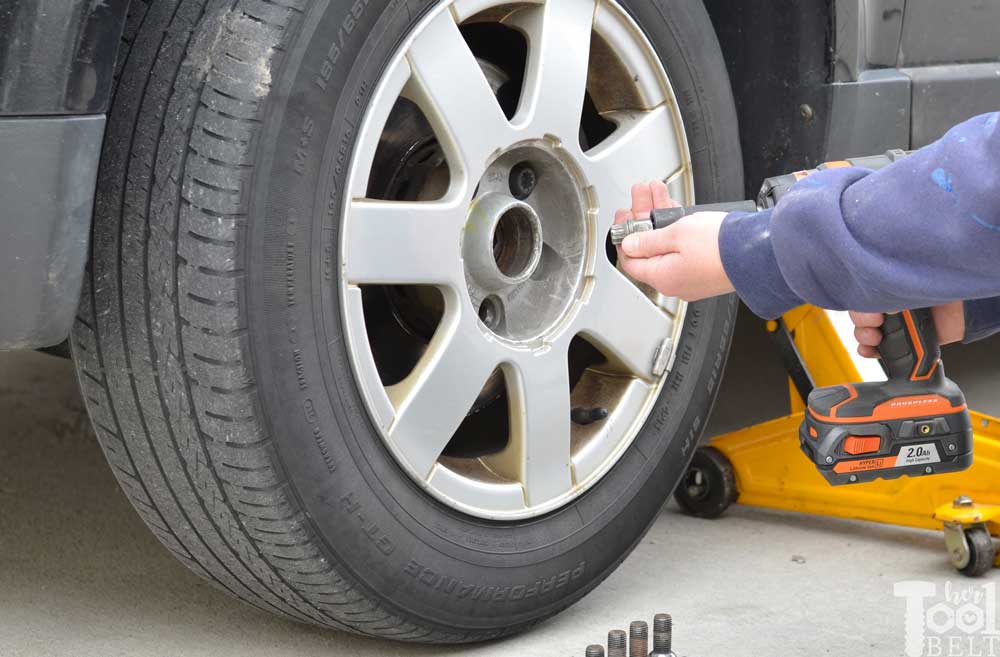 Some days, we'd lift. Other days, we'd do old-school suicides. One day, to work on speed and acceleration and possibly my humiliation threshold, he had me fetching tennis balls like a golden retriever. Every time, we'd do so many core moves that I'd leave a pool of sweat on the mat for the interns to clean up afterwards.
Some days, we'd lift. Other days, we'd do old-school suicides. One day, to work on speed and acceleration and possibly my humiliation threshold, he had me fetching tennis balls like a golden retriever. Every time, we'd do so many core moves that I'd leave a pool of sweat on the mat for the interns to clean up afterwards.
Then one day Jeff took me outside to show me, with evident pride, a heap of dirty rubber detritus he'd found at the side of the road. Truck tires of all sizes that, he indicated, would serve as my new training partners. So on we went. Some we'd flip. Some we'd jump on. Some we'd slug with a sledgehammer. I knew all about these kinds of workouts. Living in Gainesville, Florida, I've been exposed to plenty of high-profile flippers (like Olympic star Ryan Lochte, who does these workouts here with trainer Matt DeLancey, and University of Florida basketball player Patric Young who has posted his tire-workout videos on Twitter). Jeff and I spent many sessions doing all these moves, mainly working with the second-biggest tires he had.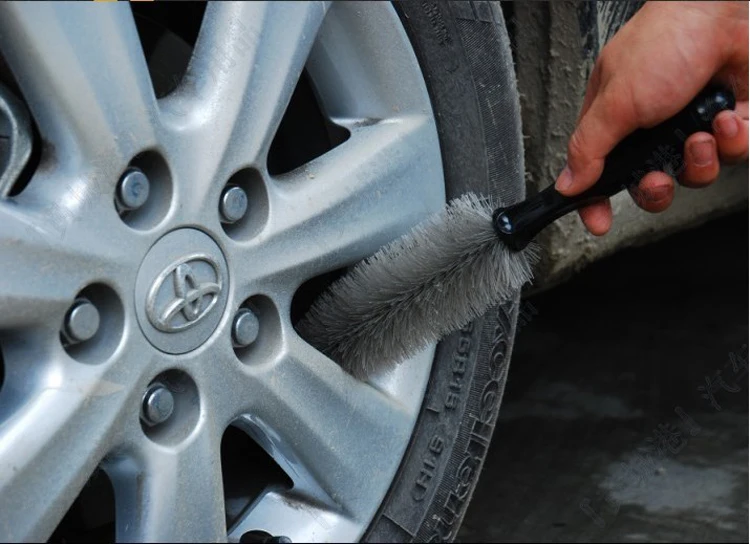 After weeks of training, I wanted a shot at his biggest—a 550-pound beast that we had only joked about me trying to lift. At the end of one workout, I squatted, dug my hands underneath, lifted, and pushed (partly with my face) that sucker over.
After weeks of training, I wanted a shot at his biggest—a 550-pound beast that we had only joked about me trying to lift. At the end of one workout, I squatted, dug my hands underneath, lifted, and pushed (partly with my face) that sucker over.
Media Platforms Design Team
I was hooked. I swung by the commercial tire business and picked up two specimens—a 140-pound truck tire and a 40-pound forklift tire. I began doing backyard workouts with buddies as we trained for a variety of mud/obstacle races, and stored my new gear in the garage, blocking some of my wife's gardening supplies and creating a blip of marital tension.
But two wasn't enough. Tire fever had set in. I now wanted to get tires of all sizes, like a dumbbell rack you'd see at the gym, except for the fact that you'd need acres, not a just a corner or a wall, to house them. I couldn't help it. Tires—I now announced to my wife, or any friend, co-worker, or neighbor who dared asked me about them—were the perfect pieces of exercise equipment.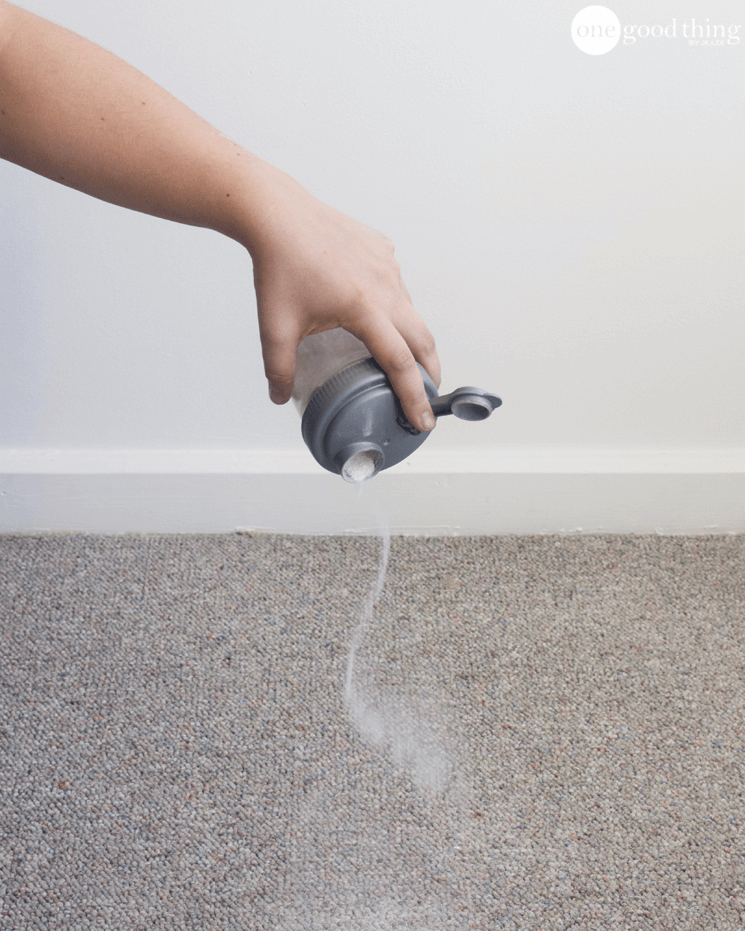 They're versatile. They're usually free (tire shops have to pay to have scrap ones hauled off, so most are happy for you to take them). They can challenge your entire body. And, at least symbolically, they're manufactured with equal parts grub, grime, and testosterone. I needed more.
They're versatile. They're usually free (tire shops have to pay to have scrap ones hauled off, so most are happy for you to take them). They can challenge your entire body. And, at least symbolically, they're manufactured with equal parts grub, grime, and testosterone. I needed more.
Media Platforms Design Team
So one day, when I was driving my wife's truck back from work, I happened to take a little detour to the commercial tire place again. As I looked over the heap of scrap rubber, the owner told me that most of the good ones were already gone. High schools had come for them, he said. So had middle schools. Sports teams. Gyms. Dojos. Everybody, it seemed, wanted their athletes, clients or students to use them.
But I didn't want the sort of tire they were looking for. I wanted something big. And as I scanned the yard, I saw my choice standing up amidst the other orphans. It looked to be around five feet high, much beefier than the others I had, and by the looks of it weighing about as much as the starting five of a middle-school basketball team. I was sold. "This one looks good," I said.
I was sold. "This one looks good," I said.
The guy told me to back the truck up while he grabbed the forklift. As he lowered the tire into the truck, he said, "You sure you're going to be able to get it out?"
This I had not considered.
"No problem," I said anyway.
I'll spare you the details, except to say I got the tire out of the truck with help from my uncommonly strong wife, it nearly got away from us and ran over her father who was recovering from a broken leg, and we were forced to call in a buddy to pick it up once it fell over in the driveway. But I did eventually get it into the yard.
Media Platforms Design Team
Later, I tried to look up the dimensions of my new acquisition, and from best I could tell, I picked a crane tire that weighed 750 pounds, and quite possibly more. I wanted a big one, but I hadn't intended to get one that big. Yes, it typically takes two of us to flip it and we once bent a barbell trying to get it up when it was filled with water. And I still hate the time that a neighbor passed us, asked if he could try to flip it, struggled two or three times, then got it up and over by himself, in front of his wife and kids. Prick. But I wouldn't trade it in, even if I could get it back in the truck, which I can't.
And I still hate the time that a neighbor passed us, asked if he could try to flip it, struggled two or three times, then got it up and over by himself, in front of his wife and kids. Prick. But I wouldn't trade it in, even if I could get it back in the truck, which I can't.
My training buddies and I try to do a tire-based workout once a week for strength, power, endurance, balance, and calorie-burn. (See workout, below.) The only downside for some folks to get into the tire business, of course, may be storage and transport. While I'd like to find another to add the collection—something in the 250- to 300-pound range—I think I'll wait. Especially considering what my wife told me when I got it home: "That's the last time you're using the truck."
CREATE YOUR OWN WORKOUTS
Here are some of the moves you can use to work all parts of your body in all kinds of ways. Most of the exercises below also work your core and have sports-specific applications (be it explosion or quickness).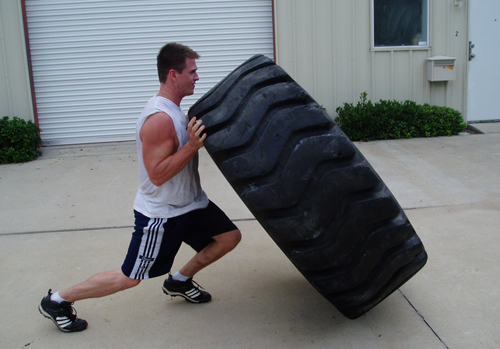
Pick a medium-sized tire (ideally, you'll want one that you can flip yourself). "No matter the implement, don't let the excitement or tool allow you to forget what's most important," says David Jack, director of Teamworks Fitness in Acton, Massachusetts. "Good form is good form and good posture is good posture all the time." The options for exercises are endless; here are a few to get you started:
Total-Body Moves
Flips: Stand behind the tire and squat down, putting your hands underneath (and not rounding your back). Lift, then flip.
Sledgehammer Hits: Stand next to the tire with your feet shoulder-width apart and your knees bent, while holding a sledgehammer. Swing the sledgehammer above your head with your hands wide apart. Whack the hell out of it. (Take a few light swings to gauge the bounce-back.)
Total-Body Combos: Do two flips, do a two-footed jump up onto the tire, jump out and off the tire, drop, and do two push-ups.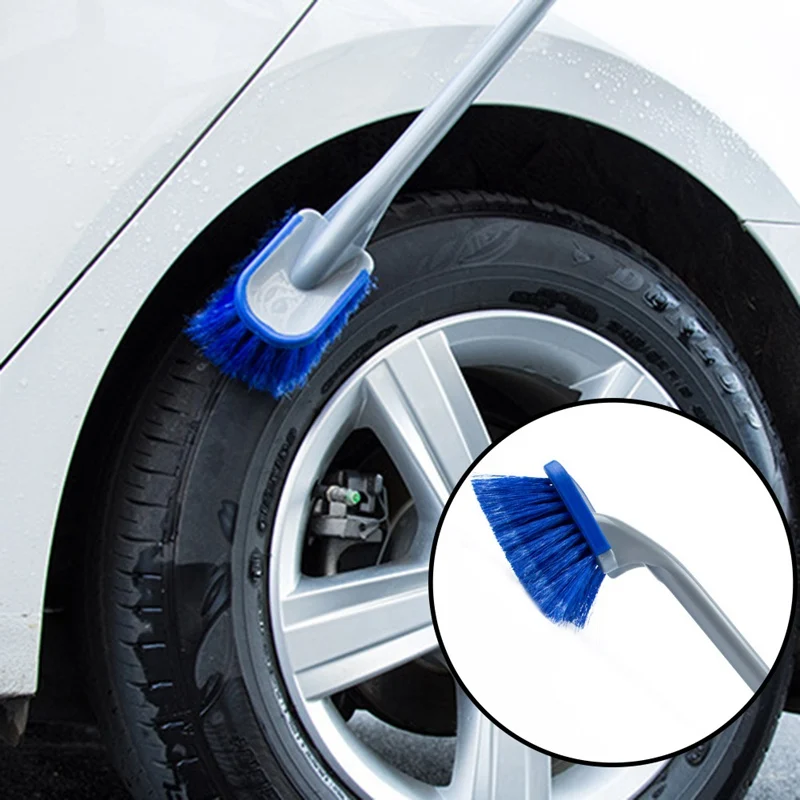 Repeat for 1 minute.
Repeat for 1 minute.
Upper-Body Moves
Twisters: "Put both feet on the tire and your hands on the ground," says Jeff Plasschaert, exercise physiologist at the Shands Fitness and Wellness Center in Florida, who introduced me to tire workouts. "Do push-ups at 12, 3, 6, and 9 o'clock, keeping your feet on the tire as you hand-walk to each position."
Crab Walk: Place both heels on the tire and your hands on the ground so your stomach is facing the sky. Walk your way around the tire with your hands, keeping your heels on the tire.
The Life Saver: I attached a 25-foot rope to my large tire so we could pull it. Pull the tire toward you by going hand over hand with the rope.
Lower-Body Moves
Plyometric Jumps: Jump up onto the tire, jump into the center, jump out. Do double or single leg.
Toe Touches: Stand in front of the tire and touch the top of the tire with the bottom of your foot, quickly alternating feet.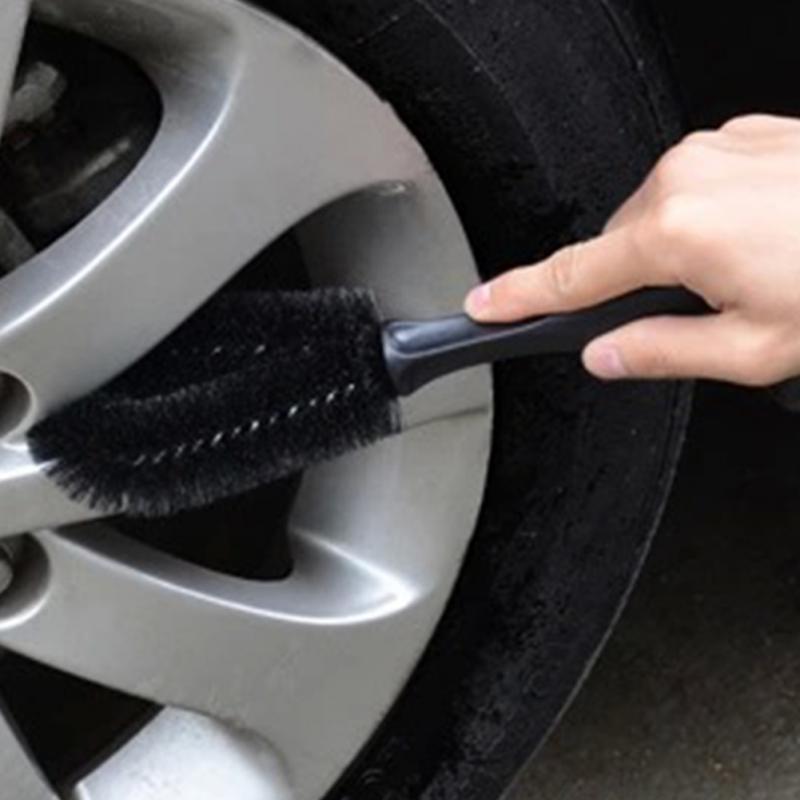 "They're great to work the core and hip flexors while using a sprinting motion," says Martin Rooney, director of the Parisi Speed School and author of Warrior Cardio. "It's great for cardio and fat burn as well as uses most of the body's muscles."
"They're great to work the core and hip flexors while using a sprinting motion," says Martin Rooney, director of the Parisi Speed School and author of Warrior Cardio. "It's great for cardio and fat burn as well as uses most of the body's muscles."
Balance Lunges: Stand on the tire with one foot in front and one foot in back. Lower yourself into a lunge, making sure your front knee doesn't extend past your foot.
Comedic Moves
The Outhouse: Have your partner to do an overhead squat holding a small tire over the head during the entire set. "If it just so happens to have some water in the tire, water comes out when they lift the tire up and soaks the person," Plasschaert says. "We call it 'The Outhouse.' More funny for the trainer than the client."
This content is imported from OpenWeb. You may be able to find the same content in another format, or you may be able to find more information, at their web site.
(
Updated:
27/07/2020
)
Contents of article
The right technology and the right detergents will help get rid of brake dust and gravel stuck in the tread, improving the safety of the car, driver and passengers.
How to wash tires we will tell in this article.
To clean the wheels from dirt, dust and oil residues, you will have to act according to the following plan:

In the final, the wheel is applied with a protector that protects the tires from the harmful effects of ultraviolet radiation.
To clean dried-on dirt from rims and wheels, you will need a machine that generates high-pressure water. Such installations are produced by American and European companies, so they are quite expensive, but they can be replaced with an ordinary hose and a special nozzle that accelerates the water jet to a pressure sufficient to clean the car.
Such installations are produced by American and European companies, so they are quite expensive, but they can be replaced with an ordinary hose and a special nozzle that accelerates the water jet to a pressure sufficient to clean the car.
To remove residual dirt, you will need a medium-hard bristle brush and a cleaning solution that is used to treat wheels and rims. This solution can be prepared from household chemicals found in the kitchen or bathroom, or bought at an automotive store. Moreover, store products are divided into universal foam cleaners and solutions based on weak acids, which can only process car rims. By the way, if you don’t know how to wipe rubber off a car, try this solution.
To wash the wheels of cleaning products, you need the same high-pressure apparatus or a hose with a nozzle. But as a napkin that will wipe off the remaining water, you need to use only clean microfiber from the package.
Summer Drive Protection Sound Comfort
Rating:
4.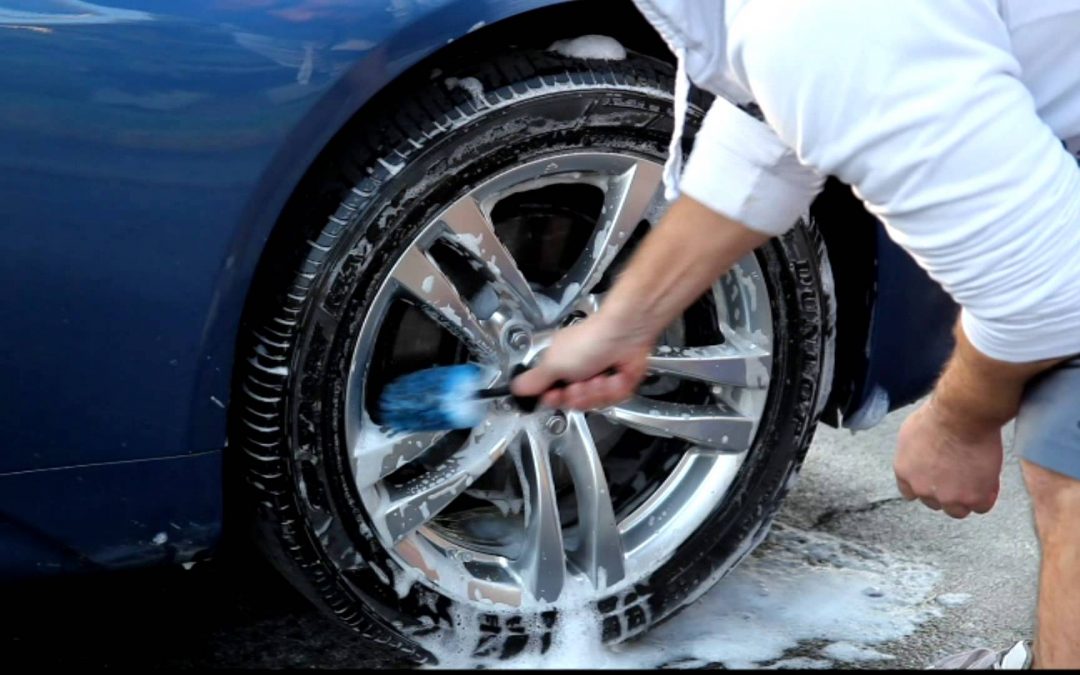 5
5
Tires Goodyear Eagle F1 Asymmetric 3 SUV
Summer Drive protection
Rating:
4.5
Tires Goodyear Eagle Sport TZ
Summer Drive protection
Rating:
4.5
Tires Goodyear EfficientGrip 2 SUV
Summer Drive Protection Run On Flat
Rating:
4.5
Tires Goodyear EfficientGrip Performance
Winter Drive protection
Tires Goodyear UltraGrip Arctic 2 SUV
Winter Drive Protection Sound Comfort
Rating:
4.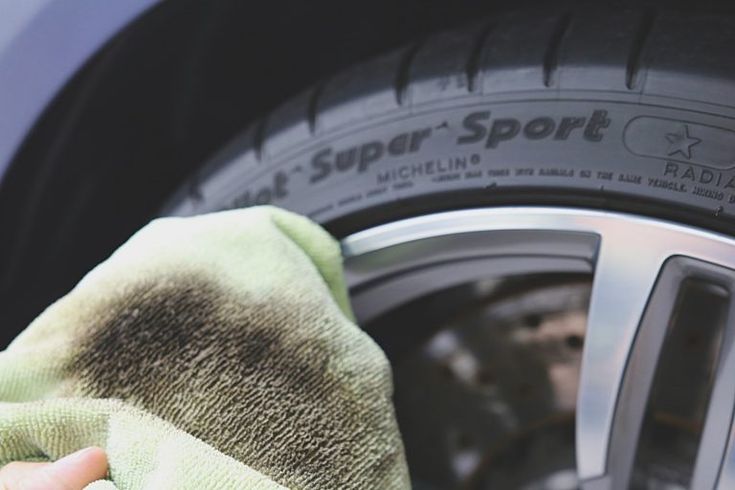 5
5
Tires Goodyear UltraGrip Ice 2
Winter Drive Protection Sound Comfort
Rating:
4.5
Tires Goodyear UltraGrip Ice SUV
Winter Drive protection
Tires Goodyear UltraGrip Performance+ SUV
All season Drive protection
Rating:
5
Tires Goodyear Vector 4Seasons Gen-3 SUV
Summer Drive Protection Run On Flat
Rating:
4
Tires Goodyear Wrangler HP All Weather
All season Drive protection
Rating:
4. 5
5
Tires Goodyear Vector 4Seasons
Summer
Rating:
4.5
Tires Goodyear Wrangler All-Terrain Adventure with Kevlar
Summer Drive protection
Rating:
4.5
Tires Goodyear EfficientGrip SUV
Summer Drive Protection Run On Flat
Rating:
4
Tires Goodyear Eagle F1 Asymmetric SUV
To prepare a solution that can clean dirt from tires, dilute in a small amount of water to half a standard bottle of dishwashing detergent.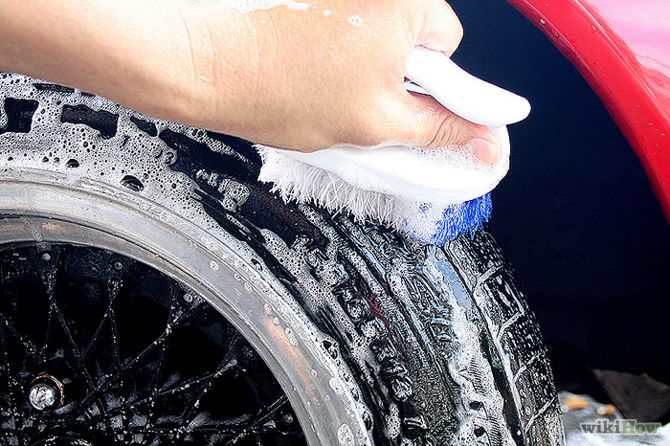 Pour the resulting concentrate into a container into which it is convenient to dip a car brush. Thanks to the abundance of surfactants found in dish detergent, a homemade solution will clean tires as well as a factory cleaner.
Pour the resulting concentrate into a container into which it is convenient to dip a car brush. Thanks to the abundance of surfactants found in dish detergent, a homemade solution will clean tires as well as a factory cleaner.
Rules for the use of home remedies that can clean wheels are similar to the recommendations of manufacturers of commercial drugs. Before treating tires and rims with home remedies, make sure you wash the tires. Otherwise, brake dust and gravel residues will turn into abrasive particles that can scratch the tread when you scrub it off dirt with a brush or sponge. Do not try to clean the wheel with an old cloth that has been used to clean the engine compartment or bodywork - it will stain the wheel with oil or gasoline.
Find Goodyear tires for your car
Popular driving wisdom says: if you love to ride, love to store tires. We already have detailed instructions for storing car tires, where we carefully studied the issue of different storage places and compared the pros and cons of each place.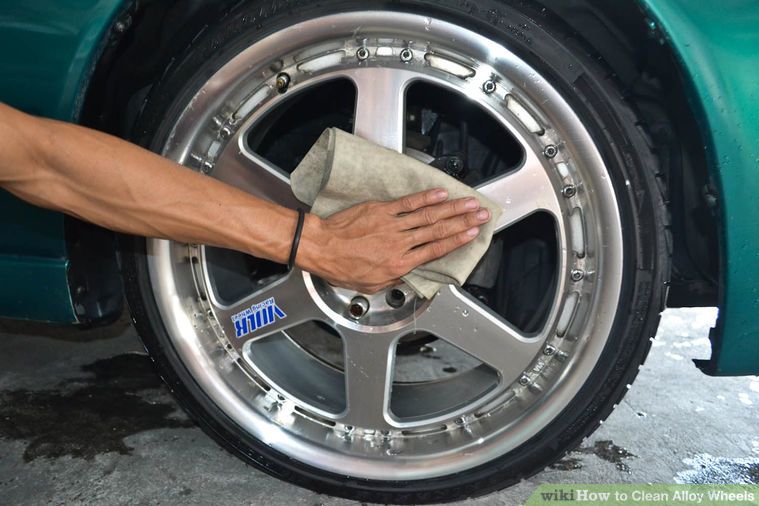 But it turned out that the topic is popular and extensive, and just finding a good tire storage service is not enough. After we were bombarded with questions about how exactly to prepare the tires for storage, we decided to write in detail about this too.
But it turned out that the topic is popular and extensive, and just finding a good tire storage service is not enough. After we were bombarded with questions about how exactly to prepare the tires for storage, we decided to write in detail about this too.
 ..
.. Even if you find the best place for storage - grandmother's loggia planted with monsters, a storage room in the basement of the house, a friend's heated garage or an attic, just take the wheels off the car and throw it right off the road for six months - it won't work. Too big a risk for the next season to lose, that is, throw in the trash, a new and good set of tires. In order to properly prepare the tires, you need to allocate a separate evening for this, which, of course, will save you both rubber and nerves.
The main conditions for proper storage of car tires, after which your tires will last for more than one year, are temperature, humidity, proper storage, that is, storage. Being made of rubber, car tires are afraid of direct sunlight, exposure to high temperatures, as well as temperature changes, and of course, humidity.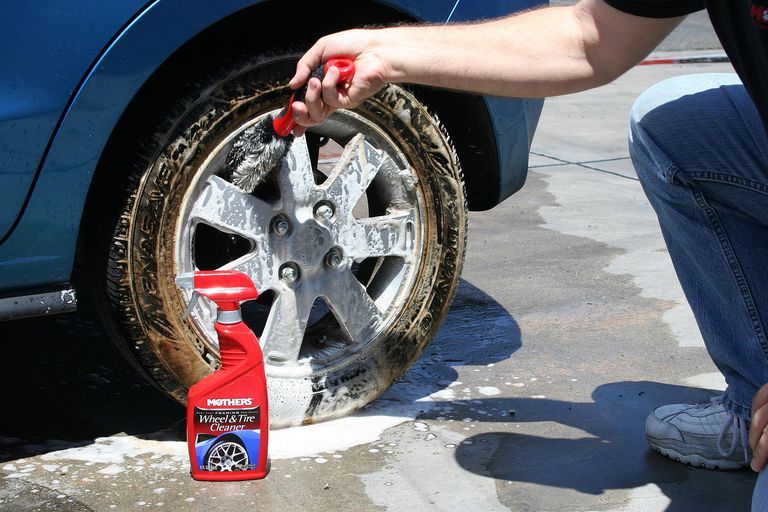 An ideal place for storing tires would be a dark, ventilated room, the air temperature inside which does not exceed + 20-25 degrees Celsius, and the humidity does not rise above 60-70%. We wrote about the options in detail in our previous article, but we will briefly repeat here:
An ideal place for storing tires would be a dark, ventilated room, the air temperature inside which does not exceed + 20-25 degrees Celsius, and the humidity does not rise above 60-70%. We wrote about the options in detail in our previous article, but we will briefly repeat here:
There are certain features of storage of winter and summer tires. Winter tires are softer, so it is recommended to store them on disks, reducing the pressure in them to the level of 1.5 atm. Winter tires have a deeper tread, which means that during storage it is necessary to avoid exposure to high temperatures and direct sunlight. When storing summer tires, it is also recommended to avoid exposure to ultraviolet radiation by packing the wheels in special bags, and to provide summer tires with a consistently warm temperature without drops. At the same time, if you store summer tires in a warm garage or pantry, make sure that there is a distance of at least 1.5 meters from the heat source to them.
At the same time, if you store summer tires in a warm garage or pantry, make sure that there is a distance of at least 1.5 meters from the heat source to them.
Keep vitamin D for yourself, and store the rubber in a place tightly protected from sunlight. Exposure to ultraviolet radiation negatively affects its condition: in direct sunlight, it becomes covered with small cracks. You may not even notice these microcracks, but they will be. If a lot of them accumulate, then with a strong slip or just a fast ride, the rubber may burst, and here you will have to change the entire wheel, since the disk will not do without damage. It is also important to remember here that ultraviolet lamps work the same way, so if you store rubber in a garage or workshop with such lighting and constantly work there, then it is better to find a more protected place for tires.
It would seem that ordinary road dirt can do something? Certainly nothing good: the dirt left on the rubber or in the grooves of the tread will greatly speed up the process of wear.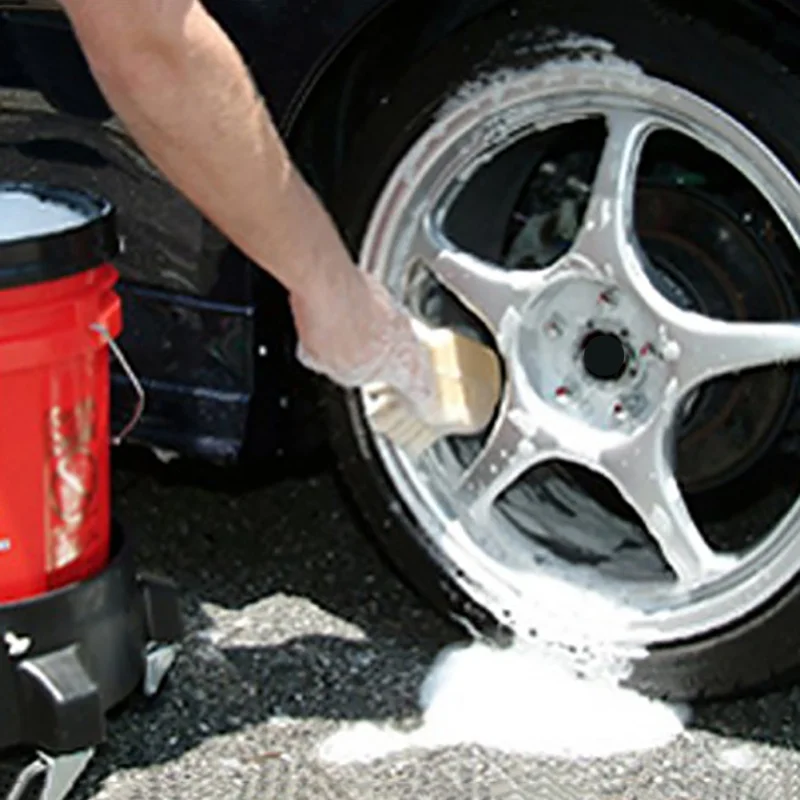 Therefore, we are not too lazy to clean the tires as thoroughly as possible from dirt, lumps of earth, dust and everything else that has stuck there from the street. The option to wash the car and then remove the wheels is not suitable for obvious reasons: by the time you get to the tire shop, the wheels will get dirty and you will have to return. But meticulous flushing also has advantages that experienced drivers know about. With manual washing, you will easily notice cuts, cracks, self-tapping screws stuck in rubber, nails, pieces of glass or sharp stones. After washing - especially thorough drying. If you are a perfectionist at heart, then there is a separate option for you - top tire care, namely, after drying, treat the wheels with a special rubber preservation agent or, in other words, silicone grease. It is absorbed into the very depth of the projector and into micropores, displacing all moisture.
Therefore, we are not too lazy to clean the tires as thoroughly as possible from dirt, lumps of earth, dust and everything else that has stuck there from the street. The option to wash the car and then remove the wheels is not suitable for obvious reasons: by the time you get to the tire shop, the wheels will get dirty and you will have to return. But meticulous flushing also has advantages that experienced drivers know about. With manual washing, you will easily notice cuts, cracks, self-tapping screws stuck in rubber, nails, pieces of glass or sharp stones. After washing - especially thorough drying. If you are a perfectionist at heart, then there is a separate option for you - top tire care, namely, after drying, treat the wheels with a special rubber preservation agent or, in other words, silicone grease. It is absorbed into the very depth of the projector and into micropores, displacing all moisture.
Optimum temperature at which tires should be stored: from -10 to +25 degrees Celsius. Tires will keep better if there are no temperature fluctuations in the storage place. For example, it is a heated garage or a warm warehouse. The best temperature for tires is a stable + 18-20 degrees Celsius.
Tires will keep better if there are no temperature fluctuations in the storage place. For example, it is a heated garage or a warm warehouse. The best temperature for tires is a stable + 18-20 degrees Celsius.
The humidity in the room where tires are stored should be between 50-60%. Therefore, carefully look at the place of storage - avoid too warm garages with constantly running heaters and damp, non-drying rooms. To store tires correctly, it is better to purchase special wheel covers: they pass air well, preventing condensation from forming.
Wheel covers will protect the tires from dust - this is a good advantage, although nothing bad will happen without them. The main thing is not to tie the bags to ensure constant air circulation to the tires.
The difference is in convenience - of course, it is more convenient to store tires on rims, since you can change the wheels yourself, and the tire fitting process is faster. However, there is a nuance that affects the quality of rubber: if you store the wheels as an assembly, then the inner surface of the rubber will be reliably protected from dust. Also, the tires will be inflated to normal pressure, which means they will definitely not deform.
However, there is a nuance that affects the quality of rubber: if you store the wheels as an assembly, then the inner surface of the rubber will be reliably protected from dust. Also, the tires will be inflated to normal pressure, which means they will definitely not deform.
Tires without rims must be stored vertically on racks, otherwise they will deform. It will be ideal to periodically turn the tires 30 degrees so that they remain even.
Tires on rims must be stored lying down, stacking one wheel on top of another, but no more than 4 tires in a stack. The second option for rubber on disks is to store it in limbo.
So, we washed, dried and treated the wheels. What's next? We take stickers, paper, adhesive tape, felt-tip pen and mark each tire. This is for you, they are all the same and it seems that you can swap places without looking and there will be no difference. But for a car, there is a difference, especially if you have recently undergone a wheel alignment.
But for a car, there is a difference, especially if you have recently undergone a wheel alignment.
Everything is simple here: front right (RR), front left (RL), rear right (RR), rear left (RL). If the tires are stored without disks, then first the rubber must be removed from the disks, which means that you need to resolve this issue with professionals in advance - this service is done in any tire fitting in 5 minutes.
Do not forget to wash the tires well to remove dirt. The easiest and most convenient way to do this is on a touchless wash under a strong jet of water with shampoo. If there is indelible dirt somewhere, rub it by hand with a stiff brush or cloth.
Let dry. It is easier to do this in the sun, but the main moisture must be removed with a large rag.
If possible, treat the rubber with preservative compounds that will save it from premature wear - silicone grease will help you.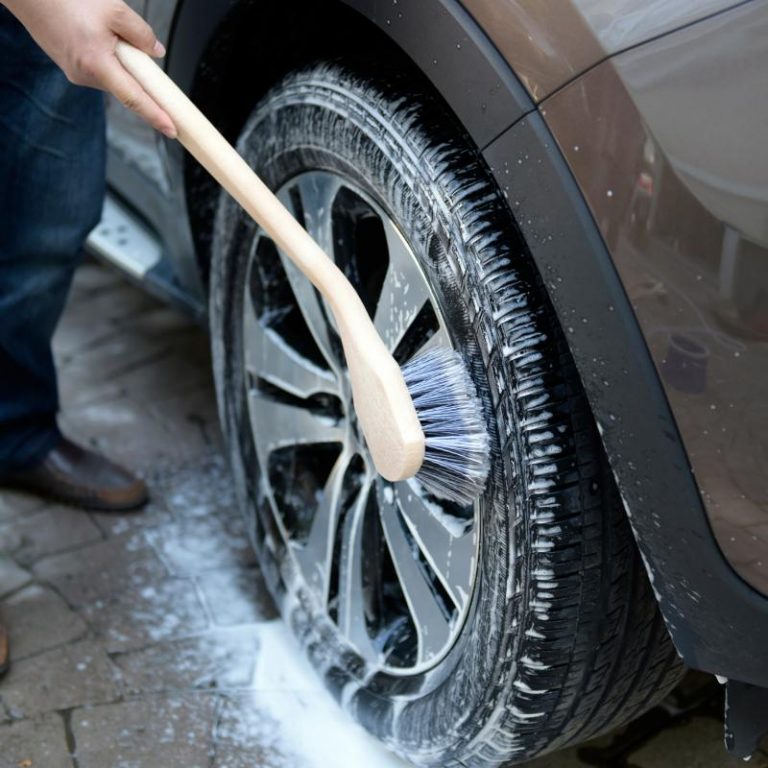
There is a small nuance here: these should be air-permeable bags or bags. Even if you wash off all the dirt from the rubber and wipe it dry, some moisture may remain, so you should not seal the tires, otherwise condensation cannot be avoided.
If you store tires on rims stacked on top of each other, be sure to reduce the pressure to 1.4-1.5 atm.
After preparing your tires for storage, it is best to store them in a warm warehouse, such as ours. The attic for rubber has all the necessary storage conditions. We have a stable temperature of +20 degrees Celsius, airing and cleaning three times a week. 24-hour security and video cameras are responsible for security. The main advantage of seasonal tire storage in Moscow at the Attic warehouse is that we provide a turnkey tire storage service: after you have prepared them, you do not have to go anywhere. Movers come home themselves and take the wheels to the warehouse.
Movers come home themselves and take the wheels to the warehouse.
And for the most patient who read the article to the end - our special bonus! A few tips for installing tires after storage:
